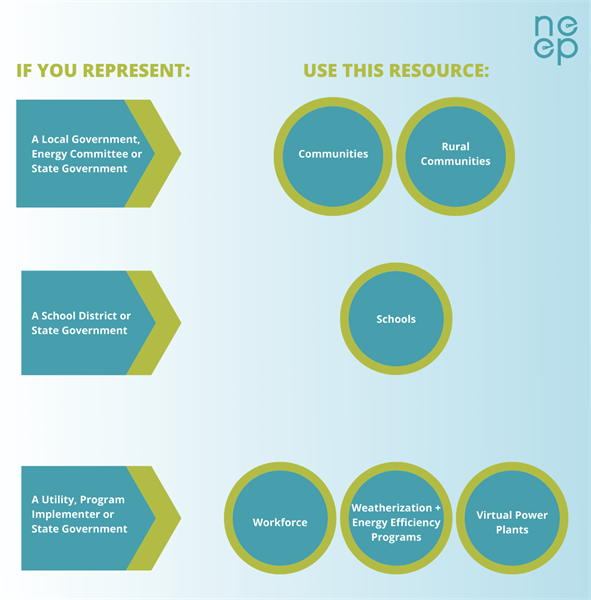Resource Library
NEEP Federal Funding Resources
Overview
Read about NEEP Federal Funding Resources. Beginning in 2020, the Federal Government invested in historic legislation for the American Rescue Plan Act, the Bipartisan Infrastructure Law, and the Inflation Reduction Act. These funds have created massive opportunity to invest in energy efficiency and decarbonization.
Quick Links
Beginning in 2020, the Federal Government invested in historic legislation for infrastructure, energy affordability, climate action, and energy justice. The most notable of these historic pieces of legislation include the American Rescue Plan Act, the Bipartisan Infrastructure Law, and the Inflation Reduction Act. These funds have created massive opportunity for local governments, states, utilities, schools, and more to invest in energy efficiency and decarbonization.
President Biden enacted Justice40 in January 2021. This federal initiative creates a goal that 40 percent of the benefits of federal investments in clean energy, housing, workforce training, and other projects flow to historically marginalized and underserved communities. This initiative seeks to start to address decades of underinvestment in these communities. See the Department of Energy’s list of Justice40 Covered Programs for more information.
The administration signed the American Rescue Plan (ARPA) into law in March 2021. ARPA provided opportunities for states to pursue energy efficiency programs, such as weatherization and workforce investment. In the Northeast, states used this funding for investments in schools, assistance with arrearages, weatherization, energy efficiency programs, and equity-focused initiatives. To learn more about ARPA funding for energy efficiency, click here.
The Federal government passed the Bipartisan Infrastructure Law (BIL), originally known as the Infrastructure Investment and Jobs Act, on November 20, 2021. It allocated an historic $62 billion for infrastructure and other costly capital projects, becoming one of the largest investments of its kind in American history. BIL funds provide investments in clean energy, building efficiency, transportation systems, broadband and communications networks, and more. For additional information, please consult the White House BIL Guidebook.
Most recently, the Inflation Reduction Act (IRA) passed in August of 2022. The IRA sets the U.S. on a path to reduce greenhouse gas emissions by 40 percent by 2030. It represents one of the most significant climate investments ever made in U.S. history and includes specific funding for weatherization, electrification, workforce training, and building energy codes. To learn more about the IRA, click here.
To equip stakeholders across the Northeast and Mid-Atlantic with resources to apply for and spend this money, NEEP has developed a series of resources on several important topic areas. These stakeholder-specific resources offer information about specific grants as well as recommendations on how to prioritize spending this money.

Resources:
- Federal Funding Opportunities for Building Energy Efficiency in Rural Communities
- BIL Opportunities for Community Building Energy Efficiency
- BIL Opportunities for School Building Energy Efficiency
- IRA Policy Fact Sheet
- Opportunities to Accelerate Energy Efficiency and Retrofit Programs with BIL and IRA
- BIL Policy Factsheet



